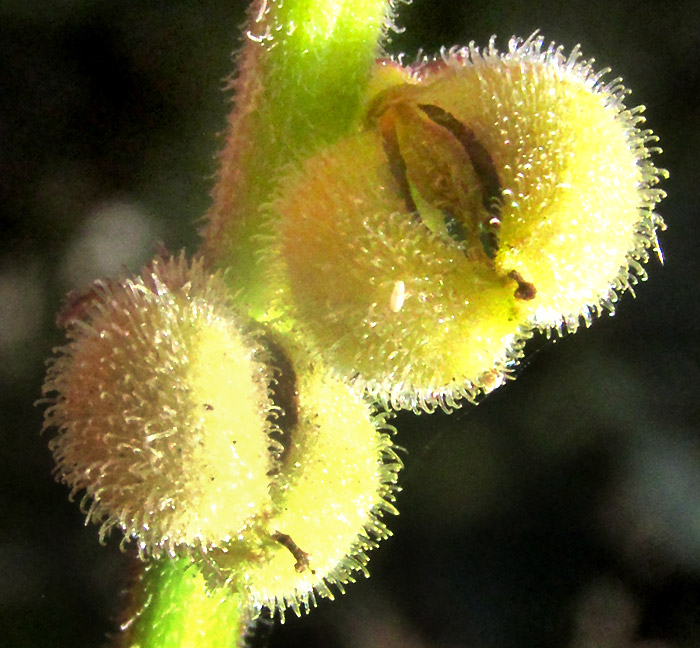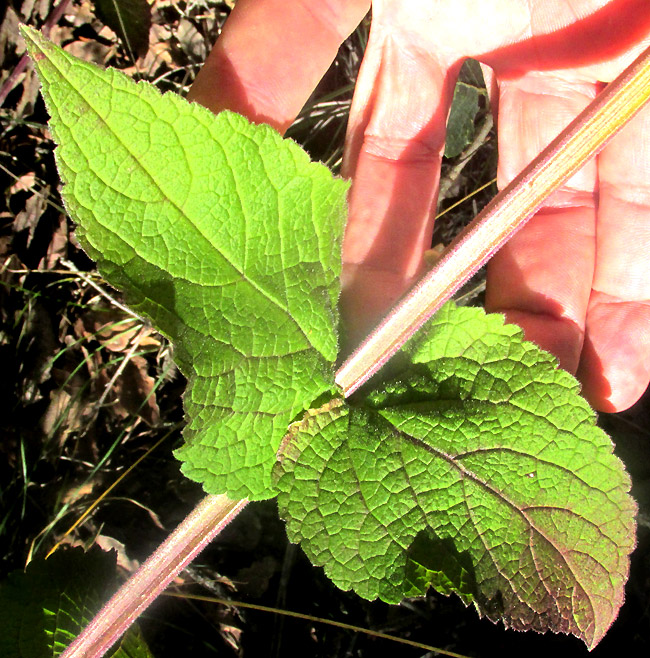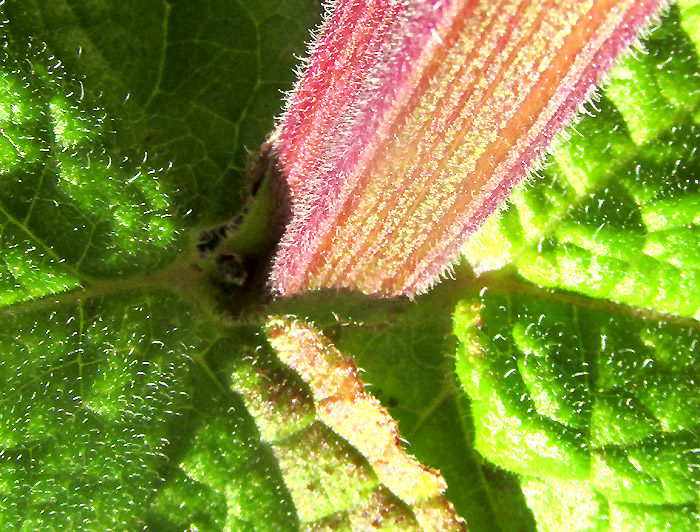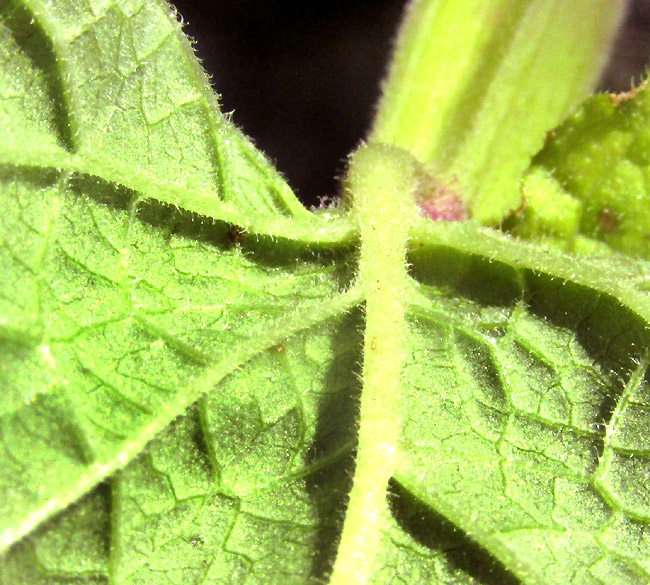Excerpts from Jim Conrad's
Naturalist Newsletter
Entry dated November 9, 2023, from notes taken near Cascadas de La Piedad waterfall 3kms NW of the community of San Pablo, municipality of Almeaco de Bonfil; oak forest atop bedrock of thick layers of compacted volcanic ash, or tuff; N20.1024°, W100.0019°, elevation 2360 meters (7750ft); extreme southern Querétaro state, MÉXICO
PRIVA MEXICANA
 On a steep northwestern slope of a somewhat open, hillside oak forest, the chest-high herbaceous plant at the right grew right at the base of an oak tree, glowing in early morning sunlight. The combination of large leaves in pairs opposite one another on a tall, stiffly straight stem, along with long, slender, spikelike inflorescences was one I couldn't remember having met.
On a steep northwestern slope of a somewhat open, hillside oak forest, the chest-high herbaceous plant at the right grew right at the base of an oak tree, glowing in early morning sunlight. The combination of large leaves in pairs opposite one another on a tall, stiffly straight stem, along with long, slender, spikelike inflorescences was one I couldn't remember having met.
Below, you can better see how long the inflorescences are, and how they arise from leaf axils, indicating that we're dealing with several long, slender inflorescences, not just one large, branched one; leaves don't develop inside inflorescences.

After taking the above picture and withdrawing my arm, small, burry, brown items had come loose from an inflorescence, entangling in my arm's hairs. Below, you can see why:

Above you see two schizocarp-type fruits, each in the process of splitting apart. Schizocarps are dry fruits which split into single-seeded parts called mericarps, in this case two of them. In the picture, each mericarp is covered by the earlier flower's calyx, which has enlarged and somewhat loosely attached itself to a mericarp's outer, convex surface. The calyx halves are densely covered with stiff, hook-tipped hairs, which latch onto furry items such as my arm, providing seed dissemination. Note the brown, slender, mushroom-shaped items emerging where the mericarps' tips meet; those are dried-up, stigma-tipped styles. The picture's top schizocarp is seen to arise from a very short, thick stalk, or pedicel. Despite first appearances, the inflorescences are spikelike racemes, not true spikes, on which flowers and fruits have no pedicels.

The leaves and strongly squared stems are very reminiscent of large salvia species of the Mint Family, but that family's fruits aren't schizocarps. They also suggest the Verbena or Vervain Family, and while that family's fruits are mostly drupes or capsules which don't split open, the fruits of a few species do split into mericarps. For identification, that's a strong clue, but I suspected that for this peculiar species I'd need all the clues I could get:

The leaves had petioles, but very short ones. Leaf bases developed slightly backward-projecting lobes. Hairs on leaves and stems were of different heights, and the tallest ones often were hooked.

Leaf undersurfaces showed nothing unexpected.
Technical identification of flowering plants mostly uses features of flowers, which our plant didn't have. However, by guessing that our plant belonged to the Verbena or Vervain Family, the Verbenaceae, and with help from the Flora del Bajio treating that family for our part of highland central Mexico, I found that in our area if you have a Verbenaceae which is herbaceous and its calyx bears hooked hairs, you have the genus Priva. That didn't seem at all right, because I'd met that genus before, with Priva lappulacea in the Yucatan, which looked very different.
Well, that species did have a calyx with with hooked hairs, and its fruits where spherical until, I read, they split into two mericarps...
In this part of Mexico we have five Priva species, and when I compare Internet pictures with each one, our plant decidedly reveals itself as PRIVA MEXICANA.
Priva mexicana is known by no English name, though in Mexico among several Spanish ones there's pegarropa, meaning "clothes-sticker." The species is described as fairly commonly occurring in disturbed oak woods, pastures and semiarid scrub above 2000 meters (6500ft), from northern Mexico south to Honduras.
I find no mention of this plant's use in traditional medicine, but for her 2013 thesis in biology entitled Composición Florística de la Región de Naranjos y sus Alrededores, Veracruz, México, Flor Liliana Juárez Espinosa found that people in and around the town of Naranjos in Mexico's Veracruz state grew the plant both as an ornamental and for its aromatic qualities, the latter of which I didn't notice, though pictures do show that it produces small, attractive, bluish-purple flowers similar to a verbena's.